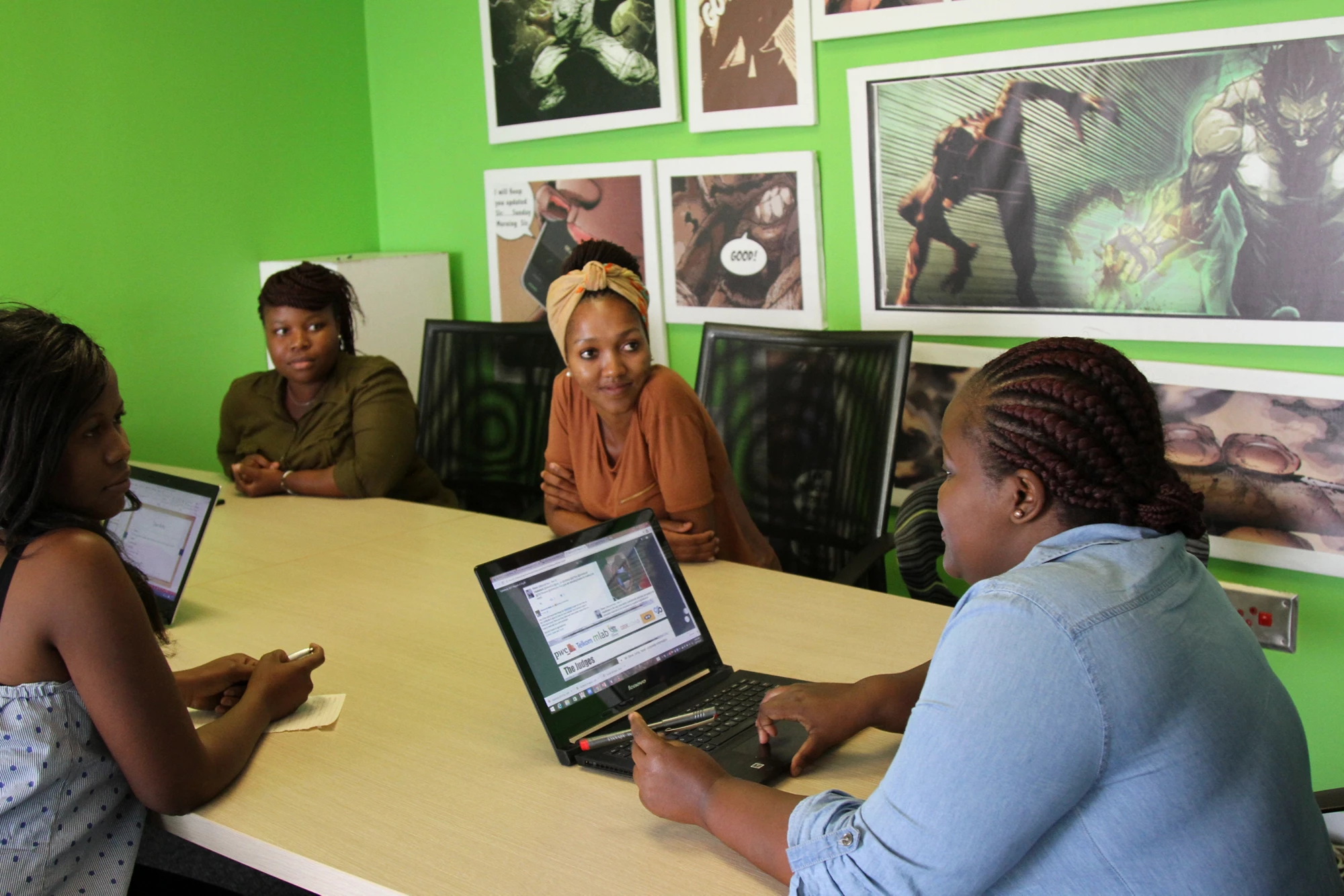
Sinah Legong and her team meet at Raeketsetsa, a program that encourages young women in South Africa to get involved in information and communications technologies. © Mutoni Karasanyi/World Bank
Olou Koucoi founded Focus Energy, a company that brings light, news and entertainment to people living off-grid in his country, Benin. Its spinoff program ElleAllume hopes to train more than 1,000 women to bring power to 100,000 Beninois homes this year. “At the end of the day, [inclusive hiring] is not a gender decision, it’s a business decision,” he says.
Over the past few months, I interviewed a number of incubator and accelerator programs to compile best practices for the World Bank Group’s Climate Technology Program. The research spanned 150 programs in 39 countries, ranging from relatively new to seasoned veterans of the clean tech incubation space. The consensus regarding gender diversity and inclusion was almost unanimous; all but one program echoed Koucoi’s sentiments – in principle.
In practice, however, encouraging more women into the clean energy sector and related programs has proved challenging. Below are some of the most popular explanations for the low levels of female representation:
“We can’t find them.”
Many clean energy incubation programs said they had difficulty recruiting due to a lack of women in the industry and strong women’s networks to tap into. While there is no shortage of women in clean energy (with industry-specific examples such as clean cookstoves serving as a good example) there are few women-led businesses. This lack of visible leadership translates into lower rates of participation.
“We would love to focus on bringing more women into the program, but we have limited resources.”
Incubation programs are often lean, with little time and few resources to expand on offerings and create targeted programs for women. Instead, to create quick wins and draw in additional funds, programs often take a “low-hanging fruit” approach, seeking out the most visible companies to recruit and invest in, which tend to have male co-founders.
“Does it really matter at the end of the day?”
Many programs are pro-gender-diversity in principle, but gender-agnostic in practice. This stems from a disconnect between the “gendered-lens” approach discussed when fundraising for incubation programs and the results frameworks which judge their success. Such factors as the number of companies exited are still weighed much more heavily than gender balance.
Below are some of the best ways I have found to create more gender-diverse and inclusive programs:
- “Female Candidates Encouraged to Apply”
- Female mentors
- Pitches are a poor estimate of potential
- If you build it, they will come
- Look beyond recruitment
- Focus on leadership development
Creating more gender-balanced start-up programs requires a concerted effort by all stakeholders. But as key implementers, program managers will have to catalyze a change in mindsets through leading by example: pushing for more gender-balanced representation in program leadership and starting women’s business networks.
While there is no shortage of women in clean energy, programs will need to increase the visibility of these women through tailored leadership, personal development and mentorship. Regardless of mission, cultural context or indeed gender, programs that last and thrive will be those that engage all parts of the communities in which they are based. In other words: “It’s not a gender decision, it’s a business decision.”


Join the Conversation